|
NOVEM BER 2007
����������������������������������������������
�back to PARKINSON'S DISEASE home page��
30th
November 2007
: New research
the
prevalence of dyskinesia
Neuroepidemiology [2007] 29 (3-4) : 163-169 [Epub
ahead of print] (Woitalla D, Mueller T, Russ H, Hock K, Haeger DA.)
Complete abstract
Dyskinesia, often
occurring as jerky movements of the arms or head, can occur in Parkinson's
disease after several years of dopaminergic treaments.
Many Parkinson's
disease patients treated with dopaminergic drugs develop
motor
fluctuations and/or dyskinesia.
 This large, retrospective study was conducted to
compare the prevalence and
treatment of dyskinesia in seven countries. A third
of people with Parkinson's Disease were found to have dyskinesia, making it more
common than was previously assumed. The overall
prevalence was 34%. However, the rate varied according to geographical location
from 24% to
51%. Regardless of geographical location, physicians were dissatisfied with the
current treatment strategies for dyskinesia. This large, retrospective study was conducted to
compare the prevalence and
treatment of dyskinesia in seven countries. A third
of people with Parkinson's Disease were found to have dyskinesia, making it more
common than was previously assumed. The overall
prevalence was 34%. However, the rate varied according to geographical location
from 24% to
51%. Regardless of geographical location, physicians were dissatisfied with the
current treatment strategies for dyskinesia.
�
28th November 2007 : News report
claimed breakthrough using gene therapy
The world's first gene therapy for a brain disease brought about
significant improvements in the mobility of Parkinson's sufferers.
American doctors claimed it could also herald a
landmark in the treatment of other
neurological disorders. However, there was a lingering doubt that the
reports by
a dozen patients of
improvements
of up to 65% in
mobility could be anecdotal or due to the placebo effect. The average
effect was only a 30%
improvement.
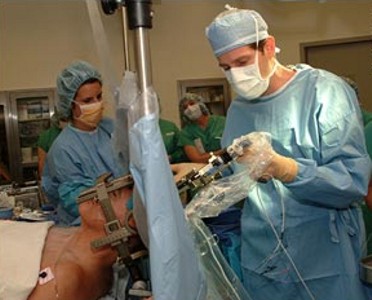 Copies of the human gene used in the
therapy were grown
in bacteria from DNA isolated from a human sample and the gene multiplied
with the bacteria for the treatment. The gene was packaged in a virus and
patients were given injections of billions of copies of the genetically
altered viruses into the brain.
The genes are for an enzyme called glutamic
acid decarboxylase, whose sole function is the formation of GABA. GABA is
a substance in the brain involved in the control of muscular movement.
For more information go to the
Complete article. Copies of the human gene used in the
therapy were grown
in bacteria from DNA isolated from a human sample and the gene multiplied
with the bacteria for the treatment. The gene was packaged in a virus and
patients were given injections of billions of copies of the genetically
altered viruses into the brain.
The genes are for an enzyme called glutamic
acid decarboxylase, whose sole function is the formation of GABA. GABA is
a substance in the brain involved in the control of muscular movement.
For more information go to the
Complete article.
�
27th
November 2007
: New research
fatty
acids lessen toxic damage in parkinson's disease
FASEB Journal [2007] Nov 21; [Epub ahead of print]
(Bousquet M, Saint-Pierre M, Julien C, Salem N Jr, Cicchetti F, Calon F)
Complete abstract
In this study, researchers examined whether omega-3
(n-3) polyunsaturated fatty acids (PUFAs)
may exert neuroprotective action in Parkinson's disease, as was previously shown in
Alzheimer's disease.
Low dietary consumption of omega-3 fatty acids is already associated with a
higher risk of neurodegenerative diseases. Mice
were
exposed to MPTP, which is a toxin known to cause Parkinson's Disease.
 However,
those mice that were also given the fatty
acids did not lose their dopamine producing cells, as did those mice that didn't
consume fatty acids, suggesting that
the fatty acids offered protection from the toxic damage caused by MPTP. Cooking
oils and fats are made up of fatty acids. Some of these fatty acids are just
like vitamins in that they are essential for important biochemical functions in
the body. Because humans they can not make their own they have to be consumed in
the diet. The highest source of these fatty acids is rapeseed oil (canola oil)
and to a lesser extent, olive oil. Somebody can greatly increase their intake of
these essential fatty acids merely by using these oils for cooking and in salads
instead of other oils and fats. However,
those mice that were also given the fatty
acids did not lose their dopamine producing cells, as did those mice that didn't
consume fatty acids, suggesting that
the fatty acids offered protection from the toxic damage caused by MPTP. Cooking
oils and fats are made up of fatty acids. Some of these fatty acids are just
like vitamins in that they are essential for important biochemical functions in
the body. Because humans they can not make their own they have to be consumed in
the diet. The highest source of these fatty acids is rapeseed oil (canola oil)
and to a lesser extent, olive oil. Somebody can greatly increase their intake of
these essential fatty acids merely by using these oils for cooking and in salads
instead of other oils and fats.
�
26th November 2007
: New research
smoking lessens the likelihood of tremor
Movement Disorders [2007] Nov 12; [Epub ahead of
print] (Benito-Leon J, Louis ED, Bermejo-Pareja F)
Complete abstract
 People
that had ever smoked were found to be marginally less likely to suffer from
tremor than people that had never smoked at all. Regular smokers were found to
be far less prone to tremor that non-smokers. This lower likelihood of tremor
escalated in proportion to the amount of cigarettes smoked and the number of
years that somebody had smoked for. Basically the more somebody had smoked the
less likely they were to suffer from tremor. People
that had ever smoked were found to be marginally less likely to suffer from
tremor than people that had never smoked at all. Regular smokers were found to
be far less prone to tremor that non-smokers. This lower likelihood of tremor
escalated in proportion to the amount of cigarettes smoked and the number of
years that somebody had smoked for. Basically the more somebody had smoked the
less likely they were to suffer from tremor.
�
25th November 2007 : News report
claim
that stem cells will rid parkinson's disease in five years
Stem cell therapy will be utilized in
treating patients suffering from Parkinson's disease within the next five
years, claimed Olle Lindvall, a professor of Lund University in Sweden.
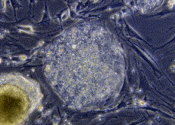 He
said
that the cure for the Parkinson's disease is likely to be one of the first
and most effective applications of human stem cell research, though the
field in general has many obstacles to overcome. "I think that Parkinson's
disease is one of the diseases where we will be able to do the first
clinical test,'' Lindvall told The Korea Times. "With the stem cell
approach, though I cannot guarantee, scientifically-based clinical trials
will be carried out within five years. When it comes to the other
diseases, it is less sure.''
For more information go to the
Complete article. He
said
that the cure for the Parkinson's disease is likely to be one of the first
and most effective applications of human stem cell research, though the
field in general has many obstacles to overcome. "I think that Parkinson's
disease is one of the diseases where we will be able to do the first
clinical test,'' Lindvall told The Korea Times. "With the stem cell
approach, though I cannot guarantee, scientifically-based clinical trials
will be carried out within five years. When it comes to the other
diseases, it is less sure.''
For more information go to the
Complete article.
The problem with his claims is that in China,
Americans and Europeans have already had stem cell implants, yet they all
still have Parkinson's Disease. During the contentious debates over the
use of stem cells in Parkinson's Disease there was such a preoccupation
with the ethical issues that the issue of whether it was actually
scientifically sound were largely overlooked. The use of stem cells in
Parkinson's Disease is based on the assumption that there is massive cell
loss in Parkinson's Disease, and that the cells therefore need replacing.
However, not a single study has ever shown that there is massive cell loss
in Parkinson's Disease. Given that the theoretical basis of stem cell use
is based on a fallacy, it is not surprising that the use of stem cells has
already been shown in practice not to rid Parkinson's Disease.
�
��������������������������������������������������������������������������������������������������������������������������������������������������������������������������������� 14th November 2007
: New research
HOW COMMON
IS DEPRESSION in parkinsoN'S DISEASE ?
Movement Disorders [2007] Nov 6; [Epub
ahead of print] (Reijnders JS, Ehrt U, Weber WE, Aarsland D, Leentjens AF.)
Complete abstract
Prevalence rates of depressive disorders in Parkinson's Disease vary widely
across studies, ranging from less than 3% to more than 90%. The aim of this review was to
assess the prevalence of depression in Parkinson's Disease
taking into
account the different means of assessment.
 Over 100 articles were
assessed for quality. Nearly 40% of people with Parkinson's Disease were found
to suffer from depression. Nearly half of these suffered from severe depression.�
There were an additional 13% that suffered from dysthymia, which is less
disabling but longer
lasting. Other methods of assessment found lower percentages. This review suggests that
depression is common in Parkinson's Disease, but
less than previously assumed,� because half of people with Parkinson's
Disease are not really affected by it. Over 100 articles were
assessed for quality. Nearly 40% of people with Parkinson's Disease were found
to suffer from depression. Nearly half of these suffered from severe depression.�
There were an additional 13% that suffered from dysthymia, which is less
disabling but longer
lasting. Other methods of assessment found lower percentages. This review suggests that
depression is common in Parkinson's Disease, but
less than previously assumed,� because half of people with Parkinson's
Disease are not really affected by it.
�
13th November 2007 : New
research
RESTING TREMOR THAT DOESN'T
RESPOND TO L-DOPA
Movement Disorders [2007] Nov 6; [Epub
ahead of print] (Sung YH, Chung SJ, Kim SR, Lee MC.)
Complete abstract
Researchers aimed to evaluate the clinical factors predicting a response to dopaminergic
treatment for resting tremor in people with Parkinson's Disease.
 Although it is
often assumed that tremor will respond to dopaminergic treatments if it is due
to Parkinson's Disease, only 42% were responsive. The majority (58%) of those
with resting tremor were not responsive to dopaminergic treatments. Those that
were responsive scored higher for Parkinson's Disease, rigidity, bradykinesia,
and postural impairment. These results suggest the possibility that some people
with Parkinson's Disease have resting tremor that is not due to Parkinson's
Disease at all. Although it is
often assumed that tremor will respond to dopaminergic treatments if it is due
to Parkinson's Disease, only 42% were responsive. The majority (58%) of those
with resting tremor were not responsive to dopaminergic treatments. Those that
were responsive scored higher for Parkinson's Disease, rigidity, bradykinesia,
and postural impairment. These results suggest the possibility that some people
with Parkinson's Disease have resting tremor that is not due to Parkinson's
Disease at all.
�
12th November 2007 : New
research
SMOKING, COFFEE AND NSAIDS
GREATLY REDUCE THE RISK OF PARKINSON'S DISEASE
Movement Disorders [2007] Nov 6; [Epub
ahead of print] (Powers KM, Kay DM, Factor SA, Zabetian CP, Higgins DS, Samii A, Nutt JG,
Griffith A, Leis B, Roberts JW, Martinez ED, Montimurro JS, Checkoway H, Payami
H.)
Complete abstract
Inverse associations of Parkinson's Disease with cigarette smoking, coffee
drinking, and non-steroidal anti-inflammatory drug
(NSAID) use have been reported
individually, but their joint effects have not been examined. A study was
conducted that assessed their combined effect. Smoking, coffee, and over the counter NSAID use as
individual factors exhibited reduced the risk by between 20% and 30%. Using two of these
reduced the risk by even more - between 37%
and 49%. However, using all three together caused the risk of Parkinson's
Disease to reduce
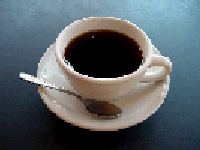   even further, by 62%.
People that smoked
the most cigarettes, drank the most coffee and took NSAIDs reduced the risk of
Parkinson's Disease even beyond that, by 87%. Rather than reduce the risk of
Parkinson's Disease would these unhealthy ways even reduce Parkinson's
Disease itself� ?�� even further, by 62%.
People that smoked
the most cigarettes, drank the most coffee and took NSAIDs reduced the risk of
Parkinson's Disease even beyond that, by 87%. Rather than reduce the risk of
Parkinson's Disease would these unhealthy ways even reduce Parkinson's
Disease itself� ?��
�
11th November 2007 : News report
CLAIMED CURE FOR DYSKINESIA
It is claimed that a cough
suppressant and a drug tested as a schizophrenia therapy could curb dyskinesia -
the involuntary movements that are the disabling side effects of taking the
Parkinson's Disease medication L-dopa. Dextromethorphan,
used in cold and flu medications as Robitussin, Sucrets, Triaminic and Vicks,
suppresses
dyskinesia in rats.
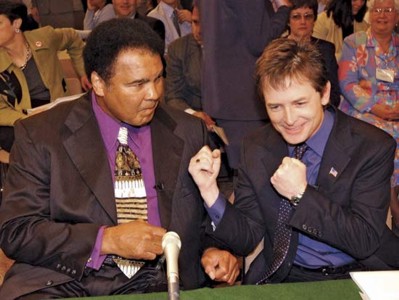 The researchers also found that BMY-14802, a drug
previously tested in people with schizophrenia suppressed dyskinesia in rats
more effectively than dextromethorphan did, suggesting that BMY-14802 might work
to block dyskinesia in people with Parkinson's Disease. "These results were
unexpected, but very exciting," claimed the study's lead author. "We have filed
a patent for the use of BMY-14802 for dyskinesias and we hope to get funding to
begin human trials very soon."
For more information go to the
Complete article.
Santhera are about to assess
JP-1730a
a completely different and more extensively assessed drug for dyskinesia.
For more information go to the
Complete article. The researchers also found that BMY-14802, a drug
previously tested in people with schizophrenia suppressed dyskinesia in rats
more effectively than dextromethorphan did, suggesting that BMY-14802 might work
to block dyskinesia in people with Parkinson's Disease. "These results were
unexpected, but very exciting," claimed the study's lead author. "We have filed
a patent for the use of BMY-14802 for dyskinesias and we hope to get funding to
begin human trials very soon."
For more information go to the
Complete article.
Santhera are about to assess
JP-1730a
a completely different and more extensively assessed drug for dyskinesia.
For more information go to the
Complete article.
Despite this being widely
reported, the scientific and experimental evidence on which these claims are
based is very weak. It has never been tested in anybody or in Parkinson's
Disease. Even the rats they tested did not have Parkinson's Disease. Dyskinesias
are normally caused by the excessive effects of dopamine. By using an
anti-schizophrenic drug they could lower dopamine activity, and could thereby
reduce dyskinesia. However, they can also inadvertently cause Parkinson's Disease symptoms as
a result of doing this. As the rats did not have Parkinson's Disease they could
not be evaluated for the excessive effect that an anti-schizophrenic drug would
have.
�
10th November 2007 : New
research
the Parkinsonian heart
Current Medicinal Chemistry
[2007] 14 (23) : 2421-2428 (Fornai F, Ruffoli R, Soldani P, Ruggieri S,
Paparelli A.)
Complete abstract
In Parkinson's Disease there is, over time, progressively greater involvement of
different regions of the nervous system. This occurs simultaneously with the
specific loss of sympathetic cardiac axon terminals. This causes a
cardiovascular dysfunction, which occurs solely in people with Parkinson's
Disease, that the researchers describe as
"Parkinsonian
Heart".
 Parrkinsonian Heart is characterized by a severe loss of the
physiological noradrenergic innervation and a slight impairment of central
autonomic control. Both of these prevent the heart's proper functioning. It is
often characterized by drug-induced physical and functional alterations.
Dopamine agonists - which are commonly used in Parkinson's Disease - could make
an already abnormal heart even worse. In people with Parkinson's Disease,
dopamine agonists, that are of the type ergot derivatives, may frequently
produce valvular fibrosis, which is the formation of excessive fibrous
connective tissue in the valves of the heart that restrict the heart's function.
These effects recently became a major issue, and led to the consideration of all
ergot dopamine agonists as dangerous for the treatment of Parkinson's Disease. Parrkinsonian Heart is characterized by a severe loss of the
physiological noradrenergic innervation and a slight impairment of central
autonomic control. Both of these prevent the heart's proper functioning. It is
often characterized by drug-induced physical and functional alterations.
Dopamine agonists - which are commonly used in Parkinson's Disease - could make
an already abnormal heart even worse. In people with Parkinson's Disease,
dopamine agonists, that are of the type ergot derivatives, may frequently
produce valvular fibrosis, which is the formation of excessive fibrous
connective tissue in the valves of the heart that restrict the heart's function.
These effects recently became a major issue, and led to the consideration of all
ergot dopamine agonists as dangerous for the treatment of Parkinson's Disease.
�
9th November 2007 : New
research
PATIENTS BETTER OFF WITHOUT
L-DOPA
Parkinsonism and
related disorders [2007] (Kim HJ, Kim JY, Ha Paek S, Jeon BS.)
Complete abstract
Generally, symptoms of Parkinson Disease patients become worse as L-dopa wears
off. However, recently, four Parkinson's Disease patients reported that their
motor functions get better after L-dopa wears off. These patients were
admitted and their pattern of motor fluctuations was monitored. All four showed
a novel pattern where motor function spontaneously got better near to their�
"on" level without medication after the effect of L-dopa wore off.
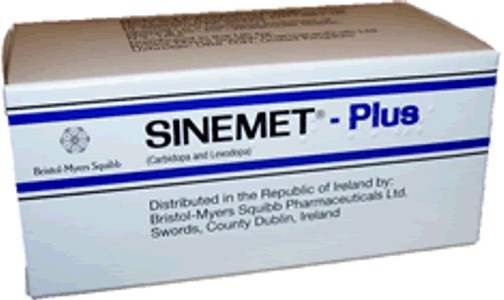 In
a way this is not
surprising. The primary fault in Parkinson's
Disease is that people are not forming sufficient quantities of L-dopa. When
people with Parkinson's Disease take L-dopa, it supplies the L-dopa that they
need, but it also (by a process called feedback inhibition) reduces their
ability to produce their own L-dopa. So the more L-dopa somebody takes, the less
they'll make. L-dopa is consequently also a cause of Parkinson's Disease symptoms.
Although somebody may have needed to take L-dopa at some point in their life,
taking L-dopa perpetuates that need, sometimes well after the original cause of
their need has gone. In
a way this is not
surprising. The primary fault in Parkinson's
Disease is that people are not forming sufficient quantities of L-dopa. When
people with Parkinson's Disease take L-dopa, it supplies the L-dopa that they
need, but it also (by a process called feedback inhibition) reduces their
ability to produce their own L-dopa. So the more L-dopa somebody takes, the less
they'll make. L-dopa is consequently also a cause of Parkinson's Disease symptoms.
Although somebody may have needed to take L-dopa at some point in their life,
taking L-dopa perpetuates that need, sometimes well after the original cause of
their need has gone.
�
8th November 2007 : New research
NSAIDS such
as aspirin reduce the risk of Parkinson's disease
Neurology [2007] 69 (19) : 1836-1842 (Wahner AD,
Bronstein JM, Bordelon YM, Ritz B.)
Complete abstract
Researchers have claimed that over-the-counter
pain medications, known as non-steroidal anti-inflammatory drugs (NSAIDs), such
as aspirin, may reduce the risk of Parkinson's Disease. Markers of
neuroinflammation have been observed in the brains and cerebrospinal fluid of
patients with Parkinson disease. Yet the link between anti-inflammatory
drugs and Parkinson's Disease remains uncertain.
 Researchers studied NSAID use
among people with Parkinson's Disease. Their data suggested that the risk of
Parkinson's Disease was halved among regular aspirin NSAID users. By regular,
they mean 2 or more pills per week. The risk of Parkinson's Disease was reduced
even more to just over a third for regular non-aspirin NSAID users, particularly
those who reported two or more years of use. The aspirin effect differed by
gender, showing a beneficial effect only in women, especially regular users.
Previous research also showed a reduced risk, but only down to around two
thirds, and only with the use of Ibuprofen. For more information go to the
Complete abstract Researchers studied NSAID use
among people with Parkinson's Disease. Their data suggested that the risk of
Parkinson's Disease was halved among regular aspirin NSAID users. By regular,
they mean 2 or more pills per week. The risk of Parkinson's Disease was reduced
even more to just over a third for regular non-aspirin NSAID users, particularly
those who reported two or more years of use. The aspirin effect differed by
gender, showing a beneficial effect only in women, especially regular users.
Previous research also showed a reduced risk, but only down to around two
thirds, and only with the use of Ibuprofen. For more information go to the
Complete abstract
Reducing inflammation also greatly improves the blood flow to the brain,
and thereby increases the supply of those substances to the brain that are
needed to form dopamine. So rather than this study being evidence that
Parkinson's Disease is due to inflammation, anti-inflammatory drugs may be
having only an indirect benefit in Parkinson's Disease by indirectly increasing
dopamine formation. This would explain why, according to the earlier study,
their beneficial effects are quite moderate.
������������������������������������������������������������������������������������������������������������������������������������������������������������������������������������
7th November 2007 : New research
mineral
levels in people with Parkinson's disease
Journal of Trace Elements in Medicine and Biology
[2007] 21 (4) : 234-241 (Alimonti A, Bocca B, Pino A, Ruggieri F, Forte G,
Sancesario G.)
Complete abstract
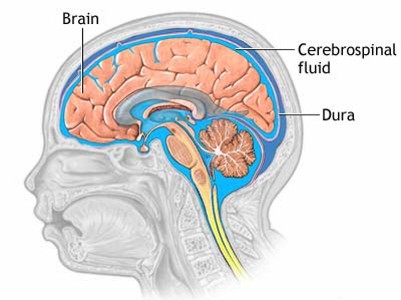 To ascertain the potential role of chemical elements (namely, Aluminium, Barium,
Beryllium, Bismuth, Calcium, Cadmium, Cobalt, Chromium, Copper, Iron, Lithium,
Magnesium, Manganese, Molybdenum, Nickel, Lead,
Silicon,
Tin, Strontium, Thallium, Vanadium, Tungsten, Zinc and Zirconium) as markers in
Parkinson's disease, the concentrations of
these elements
in the cerebrospinal fluid of patients with
Parkinson's Disease was assessed. Cerebrospinal fluid is the fluid around the
brain. Significantly lower levels of Cobalt, Chromium, Iron, Lead, Silicon and
Strontium were observed in the cerebrospinal fluid of people with
Parkinson's Disease patients when compared with
those in controls. To ascertain the potential role of chemical elements (namely, Aluminium, Barium,
Beryllium, Bismuth, Calcium, Cadmium, Cobalt, Chromium, Copper, Iron, Lithium,
Magnesium, Manganese, Molybdenum, Nickel, Lead,
Silicon,
Tin, Strontium, Thallium, Vanadium, Tungsten, Zinc and Zirconium) as markers in
Parkinson's disease, the concentrations of
these elements
in the cerebrospinal fluid of patients with
Parkinson's Disease was assessed. Cerebrospinal fluid is the fluid around the
brain. Significantly lower levels of Cobalt, Chromium, Iron, Lead, Silicon and
Strontium were observed in the cerebrospinal fluid of people with
Parkinson's Disease patients when compared with
those in controls.
No variations were detected for all the other elements.
Results suggested that Lead, Chromium, and Iron were the most suitable elements
to distinguish� people with Parkinson's Disease. This tends to nullify
claims that Parkinson's Disease is normally due to the toxicity of one or
more of these substances, because none were found to be present in high
levels in Parkinson's Disease. It is not surprising that iron levels were
found to be low, because iron is essential for the formation of L-dopa -
which is the primary biochemical fault in Parkinson's Disease. Chromium
levels being low is more surprising because Chromium levels are usually
low in Diabetes rather than Parkinson's Disease due to Chromium being
essential for the function of insulin.
�
6th November 2007 : New book
SURVIVING ADVERSITY : living with Parkinson�s
disease
Gord Carley
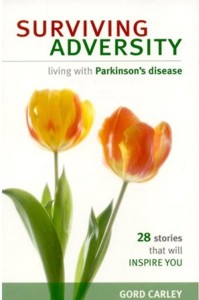 Surviving
Adversity - living with Parkinson's disease
contains twenty eight profiles of individuals who
share their stories of how they have adjusted to having Parkinson�s
disease. This book aims to provide readers with perspective and hope. The
interviewees' ages range from 29 to 95. They include
a professional golfer, a neurologist, an
acclaimed lawyer, a children�s author, a nurse, a legendary cyclist, a
former Attorney General, a highly respected news anchor and twenty other
men and women.
The link to the
table of contents on the left hand of their web site details the names
of the people that are the subject of the chapters.
Click here for more details Surviving
Adversity - living with Parkinson's disease
contains twenty eight profiles of individuals who
share their stories of how they have adjusted to having Parkinson�s
disease. This book aims to provide readers with perspective and hope. The
interviewees' ages range from 29 to 95. They include
a professional golfer, a neurologist, an
acclaimed lawyer, a children�s author, a nurse, a legendary cyclist, a
former Attorney General, a highly respected news anchor and twenty other
men and women.
The link to the
table of contents on the left hand of their web site details the names
of the people that are the subject of the chapters.
Click here for more details
�
5th November 2007 : New research
high
Prevalence of speech difficulties in Parkinson's disease
Journal of Neurology, Neurosurgery and Psychiatry
[2007] 78 (11) : 1188-1190 (Miller N, Allcock L, Jones D, Noble E, Hildreth AJ,
Burn DJ.)
Complete abstract
Speech difficulties, such as unclear or slurred speech (dysarthria), become
inevitable in Parkinson's disease due to the effect of Parkinson's Disease on
the muscles involved in speech. Researchers aimed to establish the prevalence of
impaired speech intelligibility in people with Parkinson's Disease and the
relationship of the decline to indicators of Parkinson's Disease
progression. Nearly 40% of patients placed speech
changes among their top four concerns
regarding
Parkinson's Disease.
 The speech of around
70% of people with Parkinson's Disease was found to be affected, making it one
of the most common problems. The
intelligibility of speech in people with Parkinson's Disease was not related to
age or disease duration. It was only weakly related to the stage and the
severity of Parkinson's Disease. There were no significant differences between
those that were tremor dominant and those with postural and walking problems. The speech of around
70% of people with Parkinson's Disease was found to be affected, making it one
of the most common problems. The
intelligibility of speech in people with Parkinson's Disease was not related to
age or disease duration. It was only weakly related to the stage and the
severity of Parkinson's Disease. There were no significant differences between
those that were tremor dominant and those with postural and walking problems.
�������
�����������������������������������������������������������������������������������������������������������������������������������������������
4th November 2007 : New research
Cognitive decline followS deep brain stimulation (DBS)
Journal of Neurology,
Neurosurgery and Psychiatry [2007] Oct 26; [Epub ahead of print] (York MK, Dulay
M, Macias A, Levin H, Grossman R, Simpson R, Jankovic J.)
Complete abstract
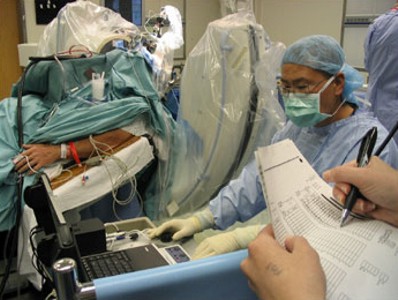 Researchers investigated the cognitive and psychiatric outcome
six months after
Deep brain stimulation (DBS) for the treatment of
Parkinson's Disease.
DBS is a method of
reducing
symptoms
that
uses
electrodes implanted into the brain.
For more information go to
Deep Brain Stimulation.
DBS patients were compared to medically-treated Parkinson's Disease
patients. The DBS patients demonstrated a significant decline in verbal memory, oral information
processing, including verbal fluency, and word naming. Researchers investigated the cognitive and psychiatric outcome
six months after
Deep brain stimulation (DBS) for the treatment of
Parkinson's Disease.
DBS is a method of
reducing
symptoms
that
uses
electrodes implanted into the brain.
For more information go to
Deep Brain Stimulation.
DBS patients were compared to medically-treated Parkinson's Disease
patients. The DBS patients demonstrated a significant decline in verbal memory, oral information
processing, including verbal fluency, and word naming.
DBS
patients also demonstrated a decline in attention, but this was no different
from those that had not had DBS.� DBS patients did not
demonstrate significant changes in depression, anxiety, or psychological
distress scores.
�
3rd November 2007 : New research
serious
decline in driving ability in Parkinson's Disease
Brain [2007] 130 (Pt 9) : 2433-2440 (Uc EY,
Rizzo M, Anderson SW, Sparks JD, Rodnitzky RL, Dawson JD.)
Complete abstract
Navigating a new route whilst driving uses
the driver's cognitive resources and has the potential to impair driving
ability in people with Parkinson's
disease. The aim of this study was to assess navigation and safety errors during
a
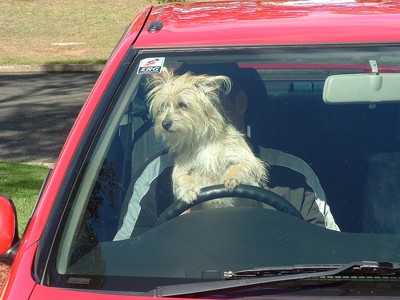 route
following task in drivers with Parkinson's Disease. Drivers with Parkinson's
Disease performed significantly worse on cognitive, visual and motor tests
compared to controls, and took longer to finish the task. People with
Parkinson's Disease were more than twice as likely to make incorrect turns, and
were nearly twice as likely to commit safety errors. Those most affected were
not those with the worst physical movement and physical difficulties, but were those with the worst
cognitive function.
� route
following task in drivers with Parkinson's Disease. Drivers with Parkinson's
Disease performed significantly worse on cognitive, visual and motor tests
compared to controls, and took longer to finish the task. People with
Parkinson's Disease were more than twice as likely to make incorrect turns, and
were nearly twice as likely to commit safety errors. Those most affected were
not those with the worst physical movement and physical difficulties, but were those with the worst
cognitive function.
�
�
2nd November 2007 :
History
Seventeenth century treatment of
parkinson's disease
Nicholas
Culpeper (1616-1654) was an English botanist, herbalist, physician and
astrologer. He published books : The English Physitian (1652) and the
Complete Herbal (1653).� For more information go to
Nicholas Culpepper.
 The Complete Herbal contains both pharmaceutical and herbal knowledge.
During the seventeenth century, symptoms of Parkinson's Disease were known
as palsy and tremblings. Among the recommendations in his Complete Herbal,
he suggests sage for "sinews, troubled with
palsy and cramp". For centuries
prior to this, Sage had also been recommended for tremor in the hands. Amongst other plant remedies
he suggested for palsy and
trembling were bilberries, briony ("English mandrake"), and
mistletoe. In the 1696 edition of his
Pharmacopoeia Londinensis, a very
odd variety
of substances were claimed to be useful
in the
treatment of "palsies", the "dead
palsy", and "tremblings". These included the "oil of winged
ants", and preparations including earthworms ! The Complete Herbal contains both pharmaceutical and herbal knowledge.
During the seventeenth century, symptoms of Parkinson's Disease were known
as palsy and tremblings. Among the recommendations in his Complete Herbal,
he suggests sage for "sinews, troubled with
palsy and cramp". For centuries
prior to this, Sage had also been recommended for tremor in the hands. Amongst other plant remedies
he suggested for palsy and
trembling were bilberries, briony ("English mandrake"), and
mistletoe. In the 1696 edition of his
Pharmacopoeia Londinensis, a very
odd variety
of substances were claimed to be useful
in the
treatment of "palsies", the "dead
palsy", and "tremblings". These included the "oil of winged
ants", and preparations including earthworms !
���
1st November 2007 : New research
Chemical
That Triggers Parkinson's Disease "Discovered"
Acta neuropathologica [2007]
Oct 27; [Epub ahead of print] (Burke WJ, Kumar VB, Pandey N, Panneton WM, Gan Q,
Franko MW, O'Dell M, Li SW, Pan Y, Chung HD, Galvin JE.)
Complete abstract
 Researchers have claimed they have
discovered that dopamine itself actually plays a role in destroying the cells
that
produce it. Dopamine can break down into a
highly toxic chemical known as DOPAL (3,4-dihydroxyphenylacetaldehyde). Using test-tube, cell-culture and animal models, researchers
claimed that it is DOPAL that causes alpha-synuclein protein in the brain to
clump together, which in turn triggers damage of dopamine-producing cells and leads
to Parkinson's Disease. "It's actually DOPAL that kicks this
whole process off and results in Parkinson's disease" they claim.
For more information go to the
Complete article. Researchers have claimed they have
discovered that dopamine itself actually plays a role in destroying the cells
that
produce it. Dopamine can break down into a
highly toxic chemical known as DOPAL (3,4-dihydroxyphenylacetaldehyde). Using test-tube, cell-culture and animal models, researchers
claimed that it is DOPAL that causes alpha-synuclein protein in the brain to
clump together, which in turn triggers damage of dopamine-producing cells and leads
to Parkinson's Disease. "It's actually DOPAL that kicks this
whole process off and results in Parkinson's disease" they claim.
For more information go to the
Complete article.
The weakness in these claims is that they
make the false assumption, as many do, that Parkinson's Disease is due entirely
to cell damage. The primary fault in Parkinson's Disease has long been shown to
be the insufficient formation of dopamine. That is why dopaminergic drugs so
readily rid its symptoms. Insufficient formation of dopamine will also lead to
cell damage. It is Parkinson's Disease that causes cell damage - not cell damage
that causes Parkinson's Disease. For more information go to
Biochemistry of Parkinson's Disease.
They did not demonstrate this effect in
people with Parkinson's Disease, or even in humans, but instead in rats that did
not have Parkinson's Disease. They also used dosages of DOPAL so high that they
would not occur in a real life situation in Parkinson's patients. When the
subjects, situation and dosages are altered so much from a real life situation,
it can not possibly be concluded what occurs in reality.� Dopamine can
break down in to DOPAL in the brain, and DOPAL can be damaging. However, when
this occurs it was found to result in Autism not Parkinson's Disease. For
more information go to
DOPAL and autism.
�
ARCHIVES :
�
Current��December
2008�
November 2008
October 2008
September 2008
August 2008
July 2008
June 2008
May 2008
April 2008
March 2008 �February
2008
January
2008�
December 2007�
November 2007� �October
2007� �September
2007 �August
2007��
July 2007�
�
�
|
.gif)
.gif)
 This large, retrospective study was conducted to
compare the prevalence and
treatment of dyskinesia in seven countries. A third
of people with Parkinson's Disease were found to have dyskinesia, making it more
common than was previously assumed. The overall
prevalence was 34%. However, the rate varied according to geographical location
from 24% to
51%. Regardless of geographical location, physicians were dissatisfied with the
current treatment strategies for dyskinesia.
This large, retrospective study was conducted to
compare the prevalence and
treatment of dyskinesia in seven countries. A third
of people with Parkinson's Disease were found to have dyskinesia, making it more
common than was previously assumed. The overall
prevalence was 34%. However, the rate varied according to geographical location
from 24% to
51%. Regardless of geographical location, physicians were dissatisfied with the
current treatment strategies for dyskinesia.  Copies of the human gene used in the
therapy were grown
in bacteria from DNA isolated from a human sample and the gene multiplied
with the bacteria for the treatment. The gene was packaged in a virus and
patients were given injections of billions of copies of the genetically
altered viruses into the brain.
The genes are for an enzyme called glutamic
acid decarboxylase, whose sole function is the formation of GABA. GABA is
a substance in the brain involved in the control of muscular movement.
For more information go to the
Copies of the human gene used in the
therapy were grown
in bacteria from DNA isolated from a human sample and the gene multiplied
with the bacteria for the treatment. The gene was packaged in a virus and
patients were given injections of billions of copies of the genetically
altered viruses into the brain.
The genes are for an enzyme called glutamic
acid decarboxylase, whose sole function is the formation of GABA. GABA is
a substance in the brain involved in the control of muscular movement.
For more information go to the
 However,
those mice that were also given the fatty
acids did not lose their dopamine producing cells, as did those mice that didn't
consume fatty acids, suggesting that
the fatty acids offered protection from the toxic damage caused by MPTP. Cooking
oils and fats are made up of fatty acids. Some of these fatty acids are just
like vitamins in that they are essential for important biochemical functions in
the body. Because humans they can not make their own they have to be consumed in
the diet. The highest source of these fatty acids is rapeseed oil (canola oil)
and to a lesser extent, olive oil. Somebody can greatly increase their intake of
these essential fatty acids merely by using these oils for cooking and in salads
instead of other oils and fats.
However,
those mice that were also given the fatty
acids did not lose their dopamine producing cells, as did those mice that didn't
consume fatty acids, suggesting that
the fatty acids offered protection from the toxic damage caused by MPTP. Cooking
oils and fats are made up of fatty acids. Some of these fatty acids are just
like vitamins in that they are essential for important biochemical functions in
the body. Because humans they can not make their own they have to be consumed in
the diet. The highest source of these fatty acids is rapeseed oil (canola oil)
and to a lesser extent, olive oil. Somebody can greatly increase their intake of
these essential fatty acids merely by using these oils for cooking and in salads
instead of other oils and fats.  People
that had ever smoked were found to be marginally less likely to suffer from
tremor than people that had never smoked at all. Regular smokers were found to
be far less prone to tremor that non-smokers. This lower likelihood of tremor
escalated in proportion to the amount of cigarettes smoked and the number of
years that somebody had smoked for. Basically the more somebody had smoked the
less likely they were to suffer from tremor.
People
that had ever smoked were found to be marginally less likely to suffer from
tremor than people that had never smoked at all. Regular smokers were found to
be far less prone to tremor that non-smokers. This lower likelihood of tremor
escalated in proportion to the amount of cigarettes smoked and the number of
years that somebody had smoked for. Basically the more somebody had smoked the
less likely they were to suffer from tremor. He
said
that the cure for the Parkinson's disease is likely to be one of the first
and most effective applications of human stem cell research, though the
field in general has many obstacles to overcome. "I think that Parkinson's
disease is one of the diseases where we will be able to do the first
clinical test,'' Lindvall told The Korea Times. "With the stem cell
approach, though I cannot guarantee, scientifically-based clinical trials
will be carried out within five years. When it comes to the other
diseases, it is less sure.''
For more information go to the
He
said
that the cure for the Parkinson's disease is likely to be one of the first
and most effective applications of human stem cell research, though the
field in general has many obstacles to overcome. "I think that Parkinson's
disease is one of the diseases where we will be able to do the first
clinical test,'' Lindvall told The Korea Times. "With the stem cell
approach, though I cannot guarantee, scientifically-based clinical trials
will be carried out within five years. When it comes to the other
diseases, it is less sure.''
For more information go to the
 Over 100 articles were
assessed for quality. Nearly 40% of people with Parkinson's Disease were found
to suffer from depression. Nearly half of these suffered from severe depression.�
There were an additional 13% that suffered from dysthymia, which is less
disabling but longer
lasting. Other methods of assessment found lower percentages. This review suggests that
depression is common in Parkinson's Disease, but
less than previously assumed,� because half of people with Parkinson's
Disease are not really affected by it.
Over 100 articles were
assessed for quality. Nearly 40% of people with Parkinson's Disease were found
to suffer from depression. Nearly half of these suffered from severe depression.�
There were an additional 13% that suffered from dysthymia, which is less
disabling but longer
lasting. Other methods of assessment found lower percentages. This review suggests that
depression is common in Parkinson's Disease, but
less than previously assumed,� because half of people with Parkinson's
Disease are not really affected by it.  Although it is
often assumed that tremor will respond to dopaminergic treatments if it is due
to Parkinson's Disease, only 42% were responsive. The majority (58%) of those
with resting tremor were not responsive to dopaminergic treatments. Those that
were responsive scored higher for Parkinson's Disease, rigidity, bradykinesia,
and postural impairment. These results suggest the possibility that some people
with Parkinson's Disease have resting tremor that is not due to Parkinson's
Disease at all.
Although it is
often assumed that tremor will respond to dopaminergic treatments if it is due
to Parkinson's Disease, only 42% were responsive. The majority (58%) of those
with resting tremor were not responsive to dopaminergic treatments. Those that
were responsive scored higher for Parkinson's Disease, rigidity, bradykinesia,
and postural impairment. These results suggest the possibility that some people
with Parkinson's Disease have resting tremor that is not due to Parkinson's
Disease at all. 

 even further, by 62%.
People that smoked
the most cigarettes, drank the most coffee and took NSAIDs reduced the risk of
Parkinson's Disease even beyond that, by 87%. Rather than reduce the risk of
Parkinson's Disease would these unhealthy ways even reduce Parkinson's
Disease itself� ?��
even further, by 62%.
People that smoked
the most cigarettes, drank the most coffee and took NSAIDs reduced the risk of
Parkinson's Disease even beyond that, by 87%. Rather than reduce the risk of
Parkinson's Disease would these unhealthy ways even reduce Parkinson's
Disease itself� ?��  The researchers also found that BMY-14802, a drug
previously tested in people with schizophrenia suppressed dyskinesia in rats
more effectively than dextromethorphan did, suggesting that BMY-14802 might work
to block dyskinesia in people with Parkinson's Disease. "These results were
unexpected, but very exciting," claimed the study's lead author. "We have filed
a patent for the use of BMY-14802 for dyskinesias and we hope to get funding to
begin human trials very soon."
For more information go to the
The researchers also found that BMY-14802, a drug
previously tested in people with schizophrenia suppressed dyskinesia in rats
more effectively than dextromethorphan did, suggesting that BMY-14802 might work
to block dyskinesia in people with Parkinson's Disease. "These results were
unexpected, but very exciting," claimed the study's lead author. "We have filed
a patent for the use of BMY-14802 for dyskinesias and we hope to get funding to
begin human trials very soon."
For more information go to the

 In
a way this is not
surprising. The primary fault in Parkinson's
Disease is that people are not forming sufficient quantities of L-dopa. When
people with Parkinson's Disease take L-dopa, it supplies the L-dopa that they
need, but it also (by a process called feedback inhibition) reduces their
ability to produce their own L-dopa. So the more L-dopa somebody takes, the less
they'll make. L-dopa is consequently also a cause of Parkinson's Disease symptoms.
Although somebody may have needed to take L-dopa at some point in their life,
taking L-dopa perpetuates that need, sometimes well after the original cause of
their need has gone.
In
a way this is not
surprising. The primary fault in Parkinson's
Disease is that people are not forming sufficient quantities of L-dopa. When
people with Parkinson's Disease take L-dopa, it supplies the L-dopa that they
need, but it also (by a process called feedback inhibition) reduces their
ability to produce their own L-dopa. So the more L-dopa somebody takes, the less
they'll make. L-dopa is consequently also a cause of Parkinson's Disease symptoms.
Although somebody may have needed to take L-dopa at some point in their life,
taking L-dopa perpetuates that need, sometimes well after the original cause of
their need has gone.  To ascertain the potential role of chemical elements (namely, Aluminium, Barium,
Beryllium, Bismuth, Calcium, Cadmium, Cobalt, Chromium, Copper, Iron, Lithium,
Magnesium, Manganese, Molybdenum, Nickel, Lead,
Silicon,
Tin, Strontium, Thallium, Vanadium, Tungsten, Zinc and Zirconium) as markers in
Parkinson's disease, the concentrations of
these elements
in the cerebrospinal fluid of patients with
Parkinson's Disease was assessed. Cerebrospinal fluid is the fluid around the
brain. Significantly lower levels of Cobalt, Chromium, Iron, Lead, Silicon and
Strontium were observed in the cerebrospinal fluid of people with
Parkinson's Disease patients when compared with
those in controls.
To ascertain the potential role of chemical elements (namely, Aluminium, Barium,
Beryllium, Bismuth, Calcium, Cadmium, Cobalt, Chromium, Copper, Iron, Lithium,
Magnesium, Manganese, Molybdenum, Nickel, Lead,
Silicon,
Tin, Strontium, Thallium, Vanadium, Tungsten, Zinc and Zirconium) as markers in
Parkinson's disease, the concentrations of
these elements
in the cerebrospinal fluid of patients with
Parkinson's Disease was assessed. Cerebrospinal fluid is the fluid around the
brain. Significantly lower levels of Cobalt, Chromium, Iron, Lead, Silicon and
Strontium were observed in the cerebrospinal fluid of people with
Parkinson's Disease patients when compared with
those in controls.

 The speech of around
70% of people with Parkinson's Disease was found to be affected, making it one
of the most common problems. The
intelligibility of speech in people with Parkinson's Disease was not related to
age or disease duration. It was only weakly related to the stage and the
severity of Parkinson's Disease. There were no significant differences between
those that were tremor dominant and those with postural and walking problems.
The speech of around
70% of people with Parkinson's Disease was found to be affected, making it one
of the most common problems. The
intelligibility of speech in people with Parkinson's Disease was not related to
age or disease duration. It was only weakly related to the stage and the
severity of Parkinson's Disease. There were no significant differences between
those that were tremor dominant and those with postural and walking problems. Researchers investigated the cognitive and psychiatric outcome
six months after
Deep brain stimulation (DBS) for the treatment of
Parkinson's Disease.
DBS is a method of
reducing
symptoms
that
Researchers investigated the cognitive and psychiatric outcome
six months after
Deep brain stimulation (DBS) for the treatment of
Parkinson's Disease.
DBS is a method of
reducing
symptoms
that
 route
following task in drivers with Parkinson's Disease. Drivers with Parkinson's
Disease performed significantly worse on cognitive, visual and motor tests
compared to controls, and took longer to finish the task. People with
Parkinson's Disease were more than twice as likely to make incorrect turns, and
were nearly twice as likely to commit safety errors. Those most affected were
not those with the worst physical movement and physical difficulties, but were those with the worst
cognitive function.
�
route
following task in drivers with Parkinson's Disease. Drivers with Parkinson's
Disease performed significantly worse on cognitive, visual and motor tests
compared to controls, and took longer to finish the task. People with
Parkinson's Disease were more than twice as likely to make incorrect turns, and
were nearly twice as likely to commit safety errors. Those most affected were
not those with the worst physical movement and physical difficulties, but were those with the worst
cognitive function.
� The Complete Herbal contains both pharmaceutical and herbal knowledge.
During the seventeenth century, symptoms of Parkinson's Disease were known
as palsy and tremblings. Among the recommendations in his Complete Herbal,
he suggests sage for "sinews, troubled with
palsy and cramp". For centuries
prior to this, Sage had also been recommended for tremor in the hands. Amongst other plant remedies
he suggested for palsy and
trembling were bilberries, briony ("English mandrake"), and
mistletoe. In the 1696 edition of his
The Complete Herbal contains both pharmaceutical and herbal knowledge.
During the seventeenth century, symptoms of Parkinson's Disease were known
as palsy and tremblings. Among the recommendations in his Complete Herbal,
he suggests sage for "sinews, troubled with
palsy and cramp". For centuries
prior to this, Sage had also been recommended for tremor in the hands. Amongst other plant remedies
he suggested for palsy and
trembling were bilberries, briony ("English mandrake"), and
mistletoe. In the 1696 edition of his  Researchers have claimed they have
discovered that dopamine itself actually plays a role in destroying the cells
that
produce it. Dopamine can break down into a
highly toxic chemical known as DOPAL (3,4-dihydroxyphenylacetaldehyde). Using test-tube, cell-culture and animal models, researchers
claimed that it is DOPAL that causes alpha-synuclein protein in the brain to
clump together, which in turn triggers damage of dopamine-producing cells and leads
to Parkinson's Disease. "It's actually DOPAL that kicks this
whole process off and results in Parkinson's disease" they claim.
For more information go to the
Researchers have claimed they have
discovered that dopamine itself actually plays a role in destroying the cells
that
produce it. Dopamine can break down into a
highly toxic chemical known as DOPAL (3,4-dihydroxyphenylacetaldehyde). Using test-tube, cell-culture and animal models, researchers
claimed that it is DOPAL that causes alpha-synuclein protein in the brain to
clump together, which in turn triggers damage of dopamine-producing cells and leads
to Parkinson's Disease. "It's actually DOPAL that kicks this
whole process off and results in Parkinson's disease" they claim.
For more information go to the